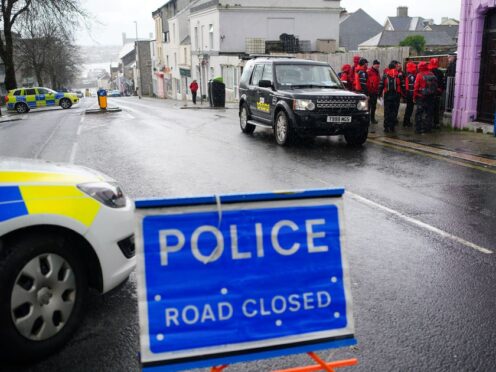A major evacuation is underway in Plymouth after an unexploded bomb, which is expected to date from the Second World War, was discovered in a garden.
Devon and Cornwall Police were called on Tuesday morning to St Michael Avenue in the Keyham area of the city where they made the unusual discovery.
Here the PA news agency looks at how the evacuation will proceed and some of the history of the situation.
– What will happen to the bomb?
Plymouth City Council said it was decided that the bomb will disposed of in the sea.
To do this, it needs to be moved by highly trained bomb disposal experts by military convoy from St Michael Avenue and travel to the Torpoint Ferry slipway.
“All options” were considered, the council said, including a controlled detonation where it was found.

– Why is the bomb being detonated in the sea?
On examination it became apparent that if the bomb was detonated where it was found, there would be too high a risk of significant damage to properties in Keyham, the council said.
Several houses could have been destroyed and others damaged by flying debris.
The council said “there are still risks with moving the device”, but experts consider them to be much lower following further work.
– What happens to residents living near the route where the bomb will be taken?
Around 3,250 people living in 1,219 properties must evacuate as a matter of urgency, the council said.
People were told to leave their homes by 2pm and it is expected they will be able to return by 5pm.
Those who will struggle to move because of disability or illness have been told they must do so and to contact the council for help, and those evacuating are urged to take medication with them.
The main train line is closed as it travels through the cordon, while ferries are suspended and buses are diverted.
Schools and nurseries have closed to allow the operation to take place, while all businesses within the cordon have been told to evacuate.

– How badly was the area targeted during World War Two?
St Michael Avenue lies around 800m west of the HMNB Devonport, which were a major Luftwaffe target during the war, according to 1st Line Defence, a company which manages risks posed by unexploded bombs.
More than 2,500 high explosive bombs were dropped on the city during the war, with many missing their intended target and falling on residential areas.
Around 10% of bombs dropped on the UK did not explode, it is estimated.
A map obtained from local archives “shows the locations of an astonishing number of recorded unexploded and delayed action bombs (removed or exploded) which fell in the area”, the company added on its website.
The reason the bomb did not explode “will never be known”, it added, but it may have been that some of the properties in the area were evacuated for a time, and the bomb was simply overlooked.
– What should someone do if they encounter an unexploded bomb?
The most important thing is “not to touch” such a suspicious item and move everyone away from the area, the company said.
Experts or the police should be contacted immediately.
